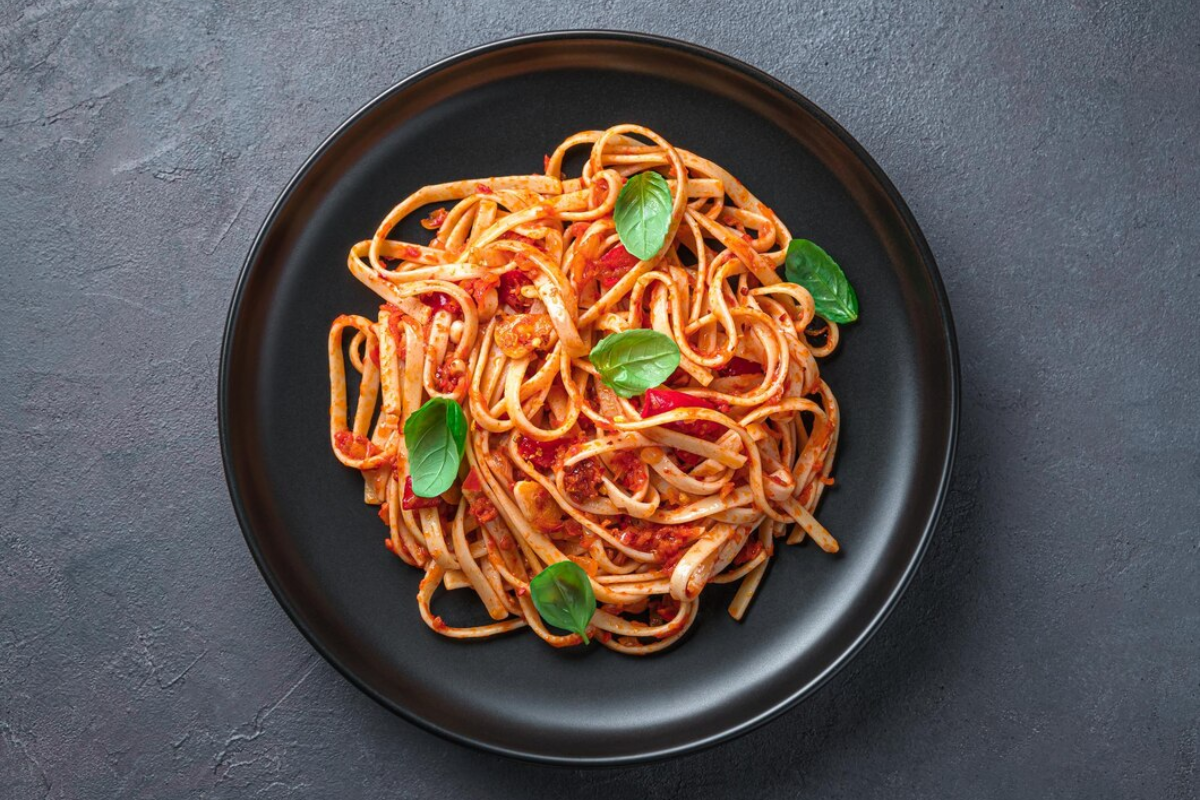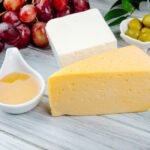Linguini is more than just another pasta on the shelf. With its flat, ribbon-like shape and smooth texture, it’s a favorite in many kitchens around the world. Whether you’re cooking a cozy weeknight meal or entertaining friends, linguini offers endless possibilities. In this article, we’ll explore what makes linguini special, where it comes from, how to cook it just right, and what sauces and recipes bring out its best flavors.
If you’ve ever wondered how linguini compares to other pasta or how to pick the right kind, this guide will walk you through it — in simple, easy-to-follow language.
What Is Linguini?
Linguini is a type of pasta known for its long, flat shape. It looks a bit like spaghetti but is wider and flatter, giving it a soft, delicate texture when cooked. Its name comes from the Italian word lingua, meaning “tongue,” because the shape is similar to a small tongue.
Unlike spaghetti, which is perfectly round, linguini is elliptical in cross-section. This allows it to hold sauces better than spaghetti while still offering a smooth bite. It’s thinner than fettuccine but wider than spaghetti, making it a versatile choice for many types of dishes.
The texture of linguini makes it ideal for lighter sauces. Its surface clings nicely to oil-based or seafood sauces, letting every bite carry flavor without being too heavy. Linguini is often used in simple yet flavorful dishes, making it a staple for home cooks and professional chefs alike.
The Origins of Linguini
Linguini has its roots in Italy, specifically in the coastal regions where seafood is abundant. It’s believed to have originated in Liguria, a region in northwestern Italy, which includes the well-known Cinque Terre and the city of Genoa. This area is famous for its seafood and herb-based sauces — a perfect match for linguini.
In Ligurian cuisine, linguini is often served with pesto or with clam-based sauces. Its popularity spread throughout Italy and eventually around the world, thanks to its versatility and balanced texture. While other pastas may be tied to heartier or more rustic fare, linguini is known for its elegance and simplicity, which reflects its coastal roots.
Today, linguini is enjoyed in households and restaurants globally, often adapted to local ingredients and tastes. Despite the variations, the pasta’s essence remains — light, smooth, and perfectly designed for flavorful, easy-to-make meals.
Linguini vs. Other Pasta: Key Differences
When choosing the right pasta, it helps to understand how linguini differs from others like spaghetti or fettuccine. Linguini stands out for its unique shape — flat and slightly curved — which helps it hold onto sauces in a more effective way than round noodles like spaghetti.
Spaghetti, being thinner and cylindrical, is typically used in dishes with tomato-based sauces. It’s lighter but doesn’t carry creamy or chunky sauces as well. On the other hand, fettuccine is thicker and heavier, often paired with rich cream sauces like Alfredo. Linguini sits comfortably in between. It’s sturdy enough for a variety of sauces but delicate enough for lighter ingredients like garlic, herbs, and seafood.
This makes linguini a great “middle ground” pasta. If you’re unsure whether a dish calls for something light or rich, linguini is often a safe and delicious choice.
Best Sauces to Pair with Linguini
One of the best things about linguini is how well it works with different types of sauces. Whether you prefer classic Italian flavors or modern fusion styles, linguini offers a perfect base.
Classic Pairings
A classic favorite is linguini with clam sauce. This simple yet flavorful dish brings out the best of the pasta’s texture. The light garlic and olive oil base allows the pasta to shine while complementing the seafood taste.
Another traditional match is linguini with pesto. Originating from the same Ligurian region, pesto — made with basil, garlic, pine nuts, and Parmesan — naturally pairs with linguini’s smooth surface. It clings just enough to deliver a punch of flavor in every bite.
Modern Twists
In modern kitchens, chefs love to experiment with linguini. Creamy sauces made with lemon, cheese, or even roasted vegetables work beautifully with the pasta’s shape. For a bit of heat, spicy arrabbiata or chili oil-based sauces add a contemporary touch.
You can also find linguini used in fusion dishes — think linguini with Thai peanut sauce or linguini tossed in sesame oil and soy sauce. These creative takes highlight linguini’s ability to adapt while still providing a familiar and comforting pasta experience.
How to Cook Linguini Perfectly?
Cooking linguini the right way doesn’t require any special skills — just a little attention to detail.
Start with a large pot of boiling water. Use enough salt to flavor the pasta as it cooks — it should taste like seawater. Drop the linguini in and stir gently to prevent sticking. Most dried linguini cooks in about 9 to 11 minutes, but check the package instructions and taste a piece near the end for the best result.
Avoid overcooking. Linguini should be al dente — tender but with a slight bite. If you’re adding it to a sauce later, undercook it by a minute so it finishes cooking in the pan, absorbing more flavor.
A common mistake is rinsing the pasta after draining. Avoid this, as rinsing removes the natural starch that helps the sauce stick. Also, save a cup of pasta water before draining. You can use this starchy water to loosen your sauce and help it coat the pasta more evenly.
Popular Linguini Recipes You Can Try at Home
Linguini is a great base for a wide variety of dishes. For a simple option, try linguini with olive oil, garlic, and chili flakes. It’s quick, flavorful, and perfect for busy weeknights.
Another favorite is linguini with shrimp and lemon butter sauce — light, zesty, and packed with flavor. For vegetarian options, linguini primavera made with fresh seasonal vegetables is both healthy and satisfying.
If you have dietary needs, many recipes can be adapted. Gluten-free linguini is widely available, and it cooks up just like regular pasta. Vegan versions of classic sauces, like pesto without cheese or creamy sauces made with cashew cream, also work well with linguini.
Choosing the Right Linguini: Fresh, Dried, or Homemade?
When it comes to buying or making linguini, you have a few choices — each with its own benefits.
Dried linguini is the most common and widely available. It’s easy to store, cooks quickly, and works well with most sauces. It’s ideal for everyday cooking and casual meals.
Fresh linguini, often found in refrigerated sections, cooks faster and has a softer texture. It’s great for lighter sauces or when you want a slightly more delicate pasta.
Homemade linguini, while more time-consuming, offers the most control over flavor and texture. If you enjoy making pasta from scratch, linguini is a rewarding choice that pairs well with fresh herbs and homemade sauces.
Quality matters no matter which type you choose. Look for brands or products made from durum wheat semolina for the best texture and flavor. For fresh or homemade linguini, using good eggs and flour will make a noticeable difference.
Conclusion
Linguini may seem simple, but it’s a pasta with depth, history, and versatility. Its smooth, flat shape makes it ideal for clinging to sauces, whether classic clam or modern creamy blends. With roots in coastal Italy and a home in kitchens worldwide, linguini deserves a spot in every pantry.
From quick weeknight dinners to elegant pasta nights, linguini rises to the occasion. Whether you’re pairing it with seafood, herbs, or something spicy and new, exploring this pasta type can bring new life to your meals.
FAQs
1. Is linguini healthier than other pasta types?
Not necessarily. Linguini has similar nutritional content to other pastas. Health depends more on portion size and the sauces or toppings you use.
2. Can linguini be used in baked pasta dishes?
Yes, but it’s not the most common choice. Its flat shape can become too soft when overbaked, so it’s better used in stovetop or lightly baked recipes.
3. What’s the best way to reheat leftover linguini?
The best method is to reheat it gently in a pan with a splash of water or broth. Avoid the microwave if possible, as it can dry out the pasta.
4. Is there a gluten-free version of linguini?
Absolutely. Many brands offer gluten-free linguini made from rice, corn, or quinoa flour. Just be sure to follow the cooking instructions carefully, as gluten-free pasta can overcook quickly.
My name is Mustafa, and I have been blogging for over 5 years. I am passionate about sharing complete, accurate, and helpful information with my readers. Along with managing content on The Matcha Read, I also contribute blog posts to premium websites. My goal is to provide valuable insights in a clear and easy-to-understand way, so every reader walks away with useful knowledge.










